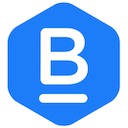Even For Ebook Readers, The Preference for Paper Remains Strong
Since ebooks came on the scene nearly 20 years ago, researchers and reading enthusiasts have wondered whether they would supplant paper books, or whether paper books would outlast them. Research studies have continued to show mixed results, with ebooks unable to clearly overtake paper. Our recent study shows a continuing strong preference for paper books over ebooks.
This is somewhat surprising, as modern ebooks platforms are so much better than the early versions from the early 2000s. We can now enjoy:
- high resolution ereader devices (early devices were low-res)
- custom typefaces like Bookerly (made by Amazon), which are designed specifically for ereaders
- more responsiveness when turning pages or annotating (early devices were sluggish)
- better word-search ability
- very broad selection of titles (early platforms were very limited)
- access to ebooks across computers, tablets, smartphones, and dedicated ereaders
Despite all of these improvements, we still see that people still prefer reading printed books over ebooks. And this is true even among tech-savvy readers. In a recent survey, we saw that people who own many digital reading devices still strongly prefer reading on paper. Over 2/3 of respondents prefer paper to screen, with paper prevailing by over 50 percentage points!
The strength of this preference is shocking, considering that nearly a third of the respondents own a dedicated ereader, over half own a tablet, and—of course—nearly all of them own both a smartphone and a computer. Despite having surrounded themselves with all of these digital devices, they prefer reading on paper to reading on-screen.
These results weren’t limited to one digital platform—the respondents read on a variety of popular platforms, including Kindle (40%), OverDrive (19%), Calibre (8%), iBooks (8%), Nook (3%), ReadMe! (1.5%) and Kobo (1.5%).
Although the preference for reading on paper was widespread, when given the choice between reading on paper and reading with our new color-based screen reading technology, the trend was reversed.
This new reading technology displays text using a color gradient that wraps from the end of one line to the beginning of the next (see below). The color of the text pulls the reader’s eyes through the text and is designed to enhance focus and improve reading ease. Instead of losing to paper by 56 percentage points, this method of reading on screen beat paper by 33 percentage points.
These results are consistent with a randomized and controlled study done by WestEd (a large educational research nonprofit) that found that the majority of middle school students preferred reading with the color gradient technology than without it. Testing by CNET, which looked at article completion rates, similarly showed that people reading with line-wrapping color gradients were 35% more likely to finish an article than people reading conventional black text (on screen).
So even though traditional screen-based reading is still less popular than reading on paper, there are new ways to read on-screen that can surpass them both.
Methodological note: We surveyed over 200 individuals, most of whom (87%) read ebooks regularly. The respondents for this poll are people who had tried a free trial of a browser plugin that applies the color-based reading technique to websites, but who decided they did not like it enough to make a purchase (for as little as 50¢ per month) after the free trial ended. So while these individuals are more likely to be aware of the color-based reading approach than the average person, the fact that they did not purchase it would tend to mitigate the potential for bias in favor of the technology. Respondents were not compensated for their participation in the study, or for their responses.
The students in the WestEd study were also not compensated, and the study was funded by a philanthropic grant from NewSchools Venture Fund. CNET’s testing was also unpaid, and they discussed some of the results in a writeup in The Atlantic.
For more information on the color-gradient reading technique, see the BeeLine Reader website. BeeLine Reader is funded by Intel Capital, but most of its funding comes from philanthropic grants and awards. BeeLine Reader’s technology has won awards from Stanford University, The United Nations, and The Tech Museum of Innovation.
